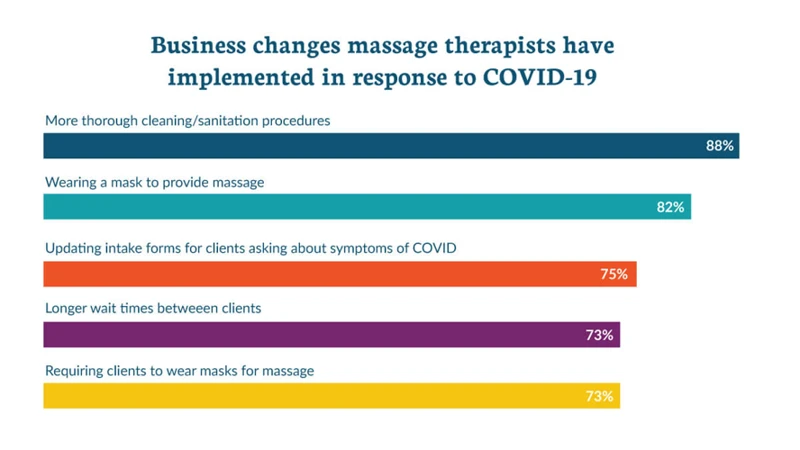Massage therapy is an increasingly popular industry, with many people seeking its benefits for relaxation, pain relief, and other health-related services. But what do we really know about this industry? Uncovering the secrets of the massage therapy industry can help us understand what it offers, how to find the right therapist, and how to get the most out of the experience. This article will explore the massage therapy industry and provide an overview of what you need to know.
Contents
What Industry is Massage Therapy?

Massage therapy is a practice that involves physical manipulation of the soft tissues of the body to improve health and well-being. It is a holistic approach to health care and can be used to treat a variety of ailments. Massage therapy is an industry that has been around for centuries, but it has only recently gained recognition as a legitimate form of healthcare.
Definition of Massage Therapy
Massage therapy is the practice of applying manual techniques, such as kneading, stroking, and compression, to the soft tissues of the body. These techniques are used to improve circulation, reduce pain and stress, and promote relaxation. Massage therapy is often used to treat a wide range of medical conditions, including chronic pain, headaches, sports injuries, and stress-related illnesses.
History of Massage Therapy
The practice of massage therapy has been around for thousands of years. It was first documented in ancient Chinese, Indian, and Egyptian cultures. Massage therapy was later adopted by the Greeks and Romans, who used it to treat a variety of ailments. The practice of massage therapy continued to evolve over the centuries, becoming an accepted and respected form of healthcare in many cultures.
Industry Classification
Massage therapy is classified as an allied health profession and falls under the umbrella of the health care industry. It is regulated by the National Certification Board for Therapeutic Massage and Bodywork and is recognized by many insurance companies as a form of alternative medicine. Massage therapists must undergo a rigorous training program to be certified and must meet certain standards of practice to maintain their certification.
What Industry Does Massage Therapy Fall Under?

Healthcare Sector
Massage therapy is part of the healthcare sector, which consists of providers of medical services and medical goods. According to the National Center for Complementary and Integrative Health, massage therapy is one of the most commonly used forms of complementary and integrative health care.
Professional, Scientific, and Technical Services Sector
Massage therapy also falls under the Professional, Scientific, and Technical Services Sector. This sector is comprised of establishments that provide professional and technical support services, such as accounting, legal, engineering, architectural, and computer services. Additionally, massage therapy establishments are categorized under this sector, as they provide specialized services for the diagnosis, treatment, and prevention of physical and mental health problems.
Due to the increasing popularity of massage therapy, many massage therapists have opened their own businesses, providing massage therapy services to clients in both the healthcare and professional, scientific, and technical services sectors. As a result, the massage therapy industry is rapidly growing and is expected to continue to grow in the coming years.
What Industry is Massage?

Massage therapy is a healthcare profession focused on the manipulation of the soft tissues of the body, such as muscle, connective tissue, tendons, ligaments, and joints. It is typically used to reduce stress, improve circulation, and promote relaxation.
Definition of Massage
Massage is a technique that involves the use of manual manipulation to manipulate soft tissue and muscles in the body. This can include rubbing, kneading, tapping, stretching, and even applying pressure to the body. Massage therapy can be used to treat a variety of different ailments, from stress relief to pain management.
History of Massage
The practice of massage therapy dates back thousands of years, with some evidence suggesting that it was practiced in ancient China, Egypt, and India. In the modern era, massage therapy has become increasingly popular, with many massage therapists offering their services in spas, clinics, hospitals, and even in homes.
Industry Classification
Massage therapy is classified as a health care profession in the United States. It is regulated by state laws, which vary by state. The industry is also regulated by the National Certification Board for Therapeutic Massage and Bodywork (NCBTMB). This organization sets national standards for massage therapy and also offers certifications to massage therapists.
In conclusion, massage therapy is an ancient practice that has become increasingly popular in the modern world. It is classified as a health care profession in the United States and is regulated by the NCBTMB. Massage therapists are trained professionals who use their skills to provide relief from stress, tension, and pain. For those looking for an alternative form of health care, massage therapy may be the perfect solution.
What Industry is a Massage Therapist?
Definition of a Massage Therapist
A massage therapist is a professional who specializes in providing therapeutic massage treatments. Massage therapists use a variety of techniques to manipulate the soft tissue and muscles of the body to promote relaxation, reduce pain, and improve overall well-being.
Education and Licensure Requirements
Massage therapists must complete a formal education program in massage therapy that is accredited by a commission or state board of massage therapy. They must also obtain a license in order to practice. Licensure requirements vary by state, but typically include completing an approved massage therapy program, passing an exam, and maintaining a certain number of continuing education credits.
Employment Outlook
Employment of massage therapists is projected to grow 22 percent from 2019 to 2029, much faster than the average for all occupations. Growth will be driven by increasing demand for massage services, in both traditional and alternative healthcare settings.
Frequently Asked Questions
What is the History of Massage Therapy?
Massage therapy dates back thousands of years, with evidence of the practice being found in ancient Chinese, Indian, Greek, and Roman cultures. It developed into a comprehensive medical practice in the 19th century, with the introduction of scientific massage techniques. In the 20th century, massage therapy was seen as a complementary health practice and has since become a popular form of alternative medicine. Today, massage therapy is offered in a variety of settings, from spas to medical clinics, and is used to treat a range of conditions from stress and tension to pain and injury.
What are the Benefits of Massage Therapy?
Massage therapy is a therapeutic practice that has been used for centuries to provide relief to the body and mind. It works to improve circulation, reduce stress, and promote relaxation. Massage therapy has many benefits, including:
- Reduces muscle tension and stiffness
- Relieves pain and discomfort
- Improves circulation and lymphatic flow
- Increases relaxation and reduces stress levels
- Improves posture and range of motion
- Improves sleep quality
- Releases endorphins to reduce pain and stress levels
- Boosts immunity
- Improves concentration and mental clarity
Massage therapy is a natural and effective way to reduce stress, reduce pain and improve overall health and wellbeing. It can be used to treat a variety of ailments and can be tailored to the individual needs of each person.
What are the Different Types of Massage Therapy?
Massage therapy encompasses a wide range of techniques, from Swedish massage to deep tissue massage. Common massage therapy types include: Swedish massage, Deep Tissue massage, Sports massage, Trigger Point massage, Reflexology, Shiatsu, and Aromatherapy. Each technique targets different areas of the body and different levels of intensity, providing different types of relief.
What Qualifications Should a Massage Therapist Have?
Massage therapists must be trained and certified in their field, and must possess a wide range of knowledge and skills in order to provide effective treatments. The minimum qualifications for a massage therapist include: a valid license or certification, knowledge of anatomy and physiology, understanding of basic massage techniques, good communication and interpersonal skills, and a good understanding of the client’s needs. Additionally, massage therapists should be trained in safety protocols and have a basic understanding of how to use massage equipment in a safe and effective manner.
How does one become a licensed massage therapist?
To become a licensed massage therapist, applicants must complete a massage therapy program at an accredited massage therapy school. Upon completion of the program, applicants will need to pass a written and practical exam administered by the State Massage Therapy Board. Once the exams are passed and all other requirements have been fulfilled, the applicant will be issued a license. Licenses must be renewed every year and continuing education is often mandatory.
Conclusion
Massage therapy can be a rewarding career path for those looking to help people improve their overall health and wellness. With the right training and knowledge, massage therapists can use their skills to provide relief and relaxation to their clients. By understanding the basics of the massage therapy industry, practitioners can better serve their clients and build a successful career.

